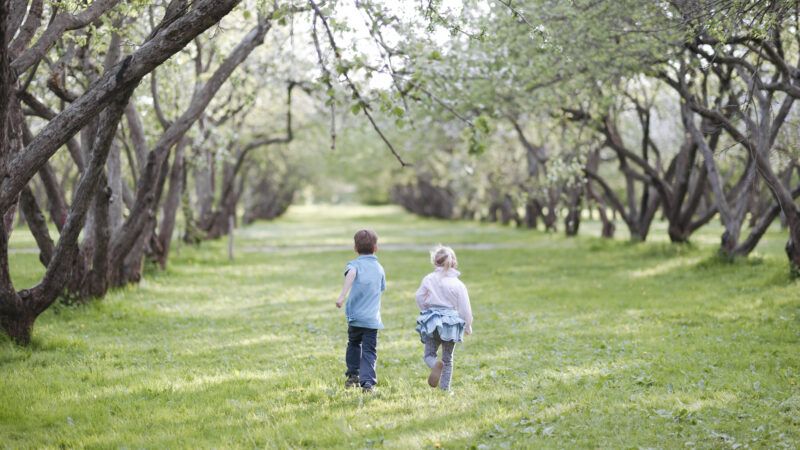Kindergartners Abandoning Public School in Fall 2021, Too
A shocking 12 percent enrollment drop in New York City points to possible long-term structural impacts of the pandemic.

"We're proud to show the nation what is possible in terms of safely educating our one million students," New York City Schools Chancellor Meisha Porter tweeted Wednesday after meeting with Education Secretary Miguel Cardona. Porter may need to refresh her math.
The nation's largest school district announced Thursday that kindergarten applications for fall 2021 were down a whopping 12 percent over last year, after having dropped 9 percent the year before. Though the city expects families to keep trickling in after the filing deadline, it's clear that the pandemic enrollment hit—which this school year cut overall K-12 participation down 4 percent, to 960,000—will not be a one-year phenomenon. Early learners are abandoning public schools, and not just in New York.
We already knew that the 2020–21 year was a wipeout for public school kindergarten enrollment nationwide—down 16 percent, according to an NPR survey of 100 districts last October. Hard numbers are devilishly hard to pin down, varying from state to state (as do kindergarten attendance requirements), but the rough estimate is that about one-third of overall K-12 decline this year (which itself has been estimated at between 2 percent and 5 percent) is attributable to kindergarten alone.
Where have all the 5-year-olds gone? Not Catholic schools, which despite being much more likely to be open five days a week saw their biggest single-year drop (6.4 percent) in a half-century, concentrated most heavily at the pre-K and kindergarten levels. Overall private school numbers, however, appear to be slightly higher.
About the only unambiguous growth categories in the entire field of minor education are learning "pods" (ad hoc groups of parents pooling their efforts either full or part time, to fill in the gaps left by school closures), and homeschooling. That latter category is absolutely exploding—up from 3.3 percent before the pandemic, to 5.4 percent in the spring of 2020, to 11.1 percent last fall, according to the Census Bureau's Household Pulse Survey, which takes care to distinguish between genuine D.I.Y. education and remote-learning hell.
The tantalizing question raised by New York City's fall application numbers against the backdrop of the homeschooling spike is: Has the pandemic fundamentally altered the public's appetite for public education? Bruno V. Manno, senior adviser for the Walton Family Foundation's K-12 Education Program, thinks so.
"The result of the Covid-19 shock dynamic in K-12 is a more pluralistic education system, one that's being redefined to include more options from more providers for more families and students," Manno wrote for Education Next last month. "Some significant number of parents and students will return to some version of the 'old normal.' But some won't. Some have exited, permanently. So the long-term effect is a question of magnitude."
The shift is already having a direct impact on per-student-based school budgets and staffing, even as the Biden administration hurriedly shovels the better half of $200 billion in federal bailout money out the door. Gilbert Public Schools in Arizona laid off 152 employees last month. Hillsborough County, Florida, the country's eighth largest school district, will soon ax 1,000 more employees after already losing 2,000 during the pandemic. Some state lawmakers are trying to tie the Biden bucks to job protection, but even with the record levels of federal funding, the basic math of K-12 funding is that with declining enrollment comes a declining number of jobs.
How much can we pin enrollment decline on districts and states being slow to fully reopen their schools? It's too early to say, just as it's premature to assume that the New York City model will play out in similar numbers elsewhere.
But this much we know: After 13 months of the pandemic, public school K-12 enrollment is down all over the country, private school enrollment is flat or slightly up, and homeschooling has shot through the roof. This spring is the first time millions of parents will have truly been able to make a premeditated, non-panicky decision about the best schooling options for their kids. If such deliberation continues to produce measurable exit from government-run institutions, the basic structure of American education will change in profound ways.
Show Comments (41)